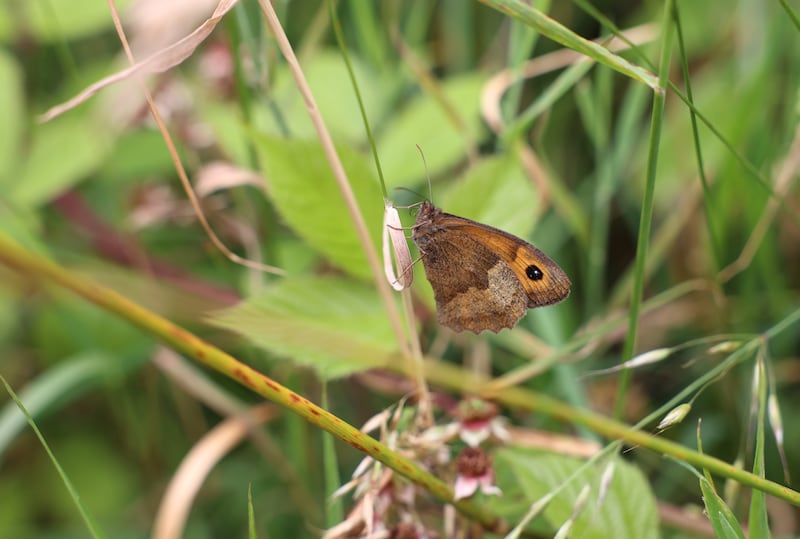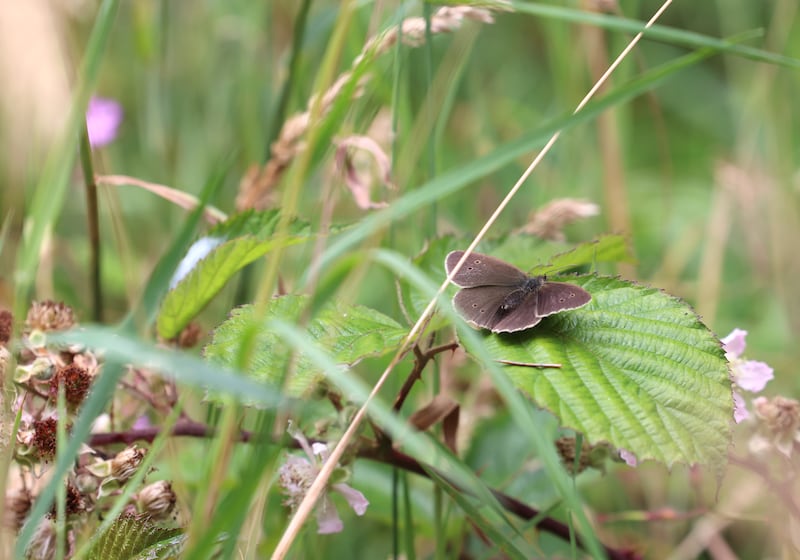Liam Lysaght stands at the entrance to Glencoum Woods in Kilkenny, with a large net in one hand and a notebook and pen in the other. He’s here to count butterflies.
As he tramps deeper into the woods, through the bracken and brambles, he points out a variety of different species.
There are a handful of ringlet butterflies – a small brown species with black circles on their wings, ringed in white – as well as a handful of meadow browns, which he marks down in his notebook.
[ Nature restoration law will affect almost 9% of Irish landOpens in new window ]
There’s an occasional flash of orange and black wings as silver-washed fritillaries, painted ladies, and red admirals sail over his head.
READ MORE
But, as the walk proceeds and the temperature drops and the clouds gather, the conditions become particularly inopportune for butterflies. It’s been a feature of this summer, marked by cold, wet, overcast weather.
Lysaght, the chief executive of the National Biodiversity Data Centre, has been doing this for 16 years, and he’s one of about 140 others – mostly volunteers – who go out weekly to count, tally, collate and analyse the data on butterfly populations around Ireland.
There’s a reason Lysaght and his fellow counters do their walks so often. The more data they gather, the better they can filter out temporary bad days like this – or even bad summers – so they can make well-evidenced conclusions.
From that they’ve been able to conclude that several butterfly species in Ireland are in trouble. Data suggests that in total, 18 per cent of Ireland’s native butterflies are under threat of extinction and 15 per cent are near threatened.

But perhaps more worrying for Lysaght is the change in numbers of the most common butterflies, which are not rated as threatened, such as the large white, the small white, the green-veined white and the orange tip. Over the past 16 years he has been measuring, their numbers have dropped alarmingly.
“The green-veined white, which is the commonest butterfly you’d see, has declined in numbers by 83 per cent since 2008,” he says. “The others are seeing declines of about 67, 68 per cent.
“The fact that they’ve declined so much is really alarming because it shows you that something significant is happening in the wider countryside.”
What’s happening goes beyond just the butterfly and is reflective of a larger problem with what’s known in scientific circles as the biomass – the sum total mass of living organisms such as plants, insects and animals in Ireland.
Lysaght is one of a small army of ecologists and conservationists working to monitor the decline in wild species here.

Another is Alan Mee, who has worked for 20 years as a biologist and conservationist, including in San Diego Zoo in California. He moved back to Ireland to work on the reintroduction of the white-tailed eagle, but soon realised there was “a whole ecosystem with a lot of other birds in trouble”.
One of those was the ring ouzel, a small bird that looks a little like a blackbird with a white crescent of feathers across its chest, for all the world like a white shirt peeping out of a formal dinner jacket.
Once found in all but five counties in Ireland, its range has severely contracted, with that contraction even evident since Mee began studying it in 2008.
Where initially he identified about a dozen birds in the MacGillycuddy’s Reeks mountains in Kerry, they seem to have disappeared from there over the last few years.
“By 2022 it was clear the species was in trouble and the decline has still continued. Some of its sites in southwest Donegal have already been deserted and we’re now just down to a handful of sites and we know of only one breeding pair.”
What’s driving the ring ouzel out of Ireland? Overgrazing by sheep and deer of the heather cover from the scree-strewn mountains and uplands favoured by the ring ouzel is a big problem, as are climate change and the state of Irish forestry, he says. Ireland has the lowest tree cover in Europe at 11 per cent – the average is around 20 per cent – and much of that is Sitka spruce, which Mee says “from a biodiversity point of view is a bit of a disaster”.
Will it be possible to bring it back from the brink? That’s harder to answer, says Mee.
“It’s going to be very difficult. I suppose with just one breeding pair they’re functionally extinct,” he says. “You need a population to sustain a species. But as long as you’ve got the birds, there is some hope.”

It’s not just land-based animals that are in trouble, according to Louise Overy, a wildlife biologist, who has been studying the angel shark, a flat-bodied bottom-feeding shark that looks like a ray.
Once upon a time, the angel shark was abundant in the waters of Tralee Bay, which it used as a breeding ground. We have a grim record of how abundant they used to be in the form of newspaper reports and photographs of angling competitions from the 1970s, which annually showed pictures of happy anglers standing over a virtual carpet of dead fish on the pier. The headlines regularly boasted of record catches until the population began to decline.
At the same time the angel shark was the accidental by-catch of commercial fishing vessels, meaning, in Overy’s words, “they were being hit on all sides, right where they congregate to breed”.
The fish was particularly vulnerable because it takes several years to sexually mature and produces relatively small numbers of pups, meaning it is slow to replenish its own numbers.
Its numbers have been decimated, and most estimates put its decline in Irish waters at 95 per cent. It is completely extinct in the North Sea.
Today a sighting of even a single angel shark can make the national news, “like we’ve struck gold”, says Overy.
Overy remains optimistic, however. Reports of some baby angel sharks, and of eggs cases of similar fish, give her hope that they’re still out there.
“We have had two reports this year of baby angel sharks, and any time you see any reproduction I like to think there is some hope,” she says.
That hope needs tangible support, and in recent years there have been several conservation projects to tackle the loss of species in Ireland.
[ The curlew’s call is giving way to silence but not everyone is giving upOpens in new window ]
Earlier this year, the National Parks and Wildlife Service (NPWS) and the Department of Agriculture launched an ambitious €25 million breeding wader project, to revive the population of birds such as the curlew, the red shank, the lapwing, the golden plover and the snipe.
It’s a collaboration between a variety of organisations, including UCD, Atlantic Technical University, Fota Wildlife Park, and is led by former NPWS ranger Owen Murphy.
Michael Martyn, an environmental consultant who is a partner in the project, says that breeding waders’ habitats have been severely damaged by decades of intensified farming and industrial peat extraction, leaving them vulnerable.
The curlew has seen its population decline by 85 per cent since the 1970s, mostly through habitat loss.
The breeding wader project intends to reverse that and revive those habitats, by a combination of protection and restoring traditional wet grasslands, protecting the birds from predators, and giving the birds a head-start with a captive breeding programme.
“These are interventions to put the balance back for a certain period of time until we get to normality. We’re a long way off but hopefully we’re building towards a sustainable population,” he says.
My father grew up in north Kerry, and he’d talk about the corncrake nearly deafening him coming home in the evening
For Liam Lysaght, all this hope needs to be tempered with realism. The data shows a frightening scale of species decline, but that data only goes back a decade or so. Anecdotal evidence from further back can be even more depressing.
He cites the example of the corncrake. “I grew up in Limerick city, and I can remember hearing corncrake on the Dock Road in the late 1970s,” he says. “My father grew up in north Kerry, and he’d talk about the corncrake nearly deafening him coming home in the evening.”
But through the 1980s and 1990s the species declined drastically, becoming practically extinct in some parts of the country. While it has since been brought back from the brink, it remains red-listed as a species with around 150 breeding pairs.
According to Lysaght, it’s illustrative of what can be achieved but also of how much more needs to be done.
“Things could change if we really take this issue as seriously as it deserves,” he says.
- Sign up for push alerts and have the best news, analysis and comment delivered directly to your phone
- Join The Irish Times on WhatsApp and stay up to date
- Listen to our Inside Politics podcast for the best political chat and analysis




















